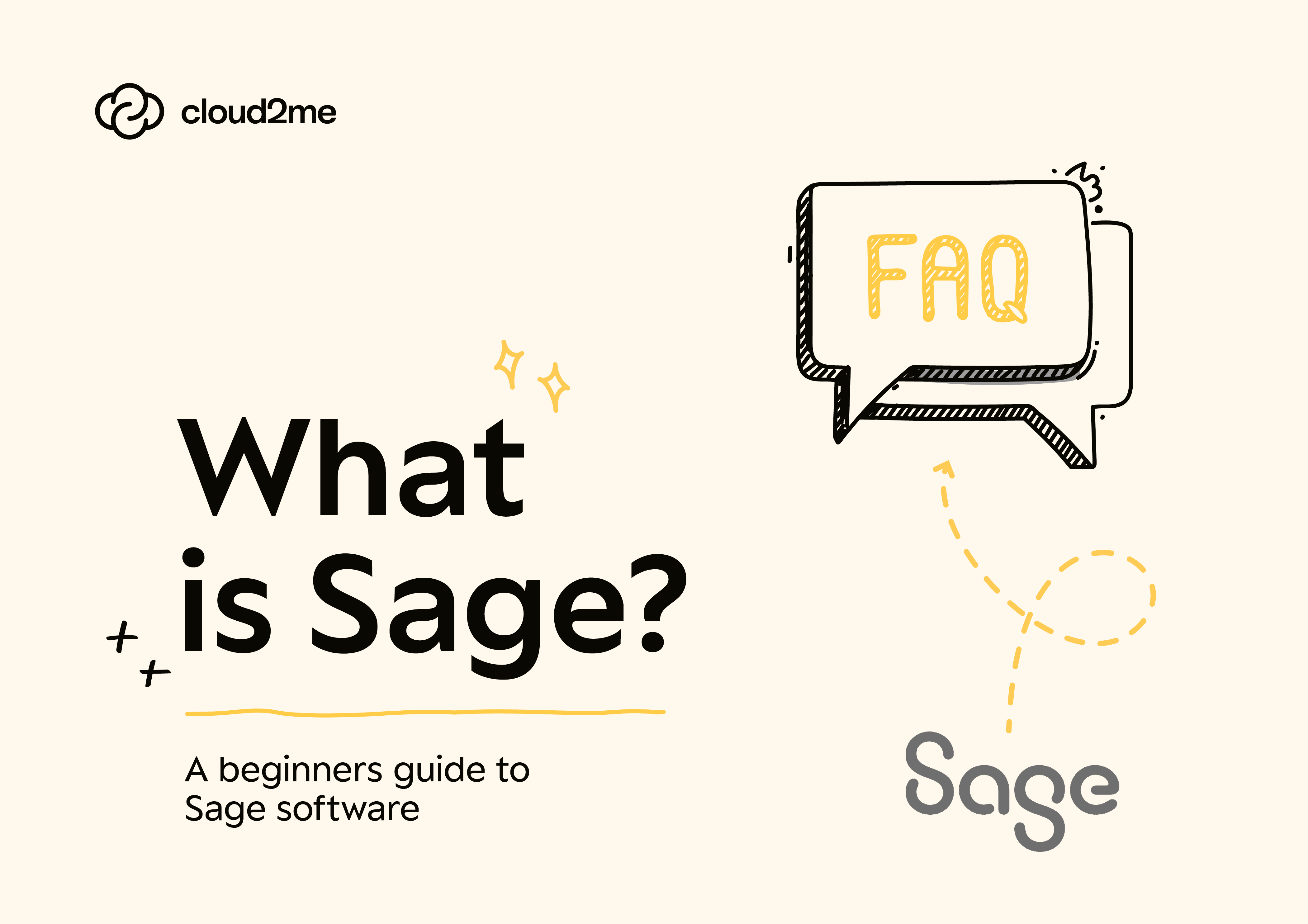Sage is a sophisticated suite of accounting software solutions designed to simplify financial management for accountants and businesses, ranging from small companies to larger firms. Sage solutions encompasses a wide array of features such as general ledger, accounts payable/receivable, cash flow management, budgeting, forecasting, and financial reporting.
Sage also facilitates payroll processing, compliance with tax regulations, employee management, and benefits administration. Its invoicing and payment systems integrate with payment gateways, making transactions easy to process and streamlining client account management. Beyond financial management, Sage offers tools for inventory and asset management, project cost tracking, and ensures adherence to tax laws.
So what is Sage like today? Despite some stiff competition from ‘SaaS only accountancy providers’ (like Xero), a recent article from Forbes Advisor has shown that Sage continues to be one of the most popular options in the UK for both accountancy practices and industry alike.
A Brief History of Sage
The company was founded in 1981 in Newcastle, United Kingdom, by David Goldman (who wanted to improve his business processes by creating quotes quickly for his print business and track his accounts), Dr Paul Muller (who worked with NASA), and student Graham Wylie. Originally, the founders aimed to create software that would automate basic accounting processes for small businesses and their customers. Their first product, Sage Sterling, was designed for the Amstrad PCW, and it quickly gained popularity due to its user-friendly interface and ability to handle essential financial tasks efficiently.
Throughout the 1990s and early 2000s, Sage Group plc expanded rapidly through a series of strategic acquisitions, enhancing its product offerings and entering new markets globally. Notable acquisitions included companies like Peachtree, a prominent U.S. accounting software firm, and Accpac, which provided ERP solutions. These acquisitions allowed Sage to offer a broader range of financial and business management solutions, catering to various industries and business sizes.
Why is Sage so popular with accountants and businesses?
What is Sage’s appeal to so many accountants and businesses alike? Many like its comprehensive financial management capabilities, which include tools for general ledger, accounts payable and receivable, cash flow management, budgeting, and forecasting.
These sage solutions enable businesses to maintain accurate financial records, make informed decisions and improve business processes. Sage also offers automated payroll processing, tax compliance, and employee benefits administration, reducing manual effort and minimising errors while ensuring regulatory compliance.
The accounting software’s advanced invoicing capabilities allow businesses to create, track, and manage invoices efficiently, with integration to payment gateways facilitating seamless transactions and improving cash flow management. Sage also provides robust inventory and asset management, allowing businesses to track inventory levels, automate reorder points, and manage asset lifecycles, ensuring optimal control and utilisation. Project management tools included in Sage enable tracking project costs, managing budgets, and monitoring time and expenses, integrating seamlessly with financial data for accurate project accounting and profitability analysis.
Tax compliance and reporting are simplified with Sage, supporting tax preparation and filing, VAT management, and adherence to local and international tax laws. Advanced security features and regular data backups protect sensitive financial information and ensure business continuity.
But probably the most important reason Sage is so popular with accountants is that it has been one of the dominant SME accountancy software players in the UK for nearly 40 years. While that dominance is being challenged by some well-funded start-ups, most accountants in the UK have, at some point or another, used Sage in their career.
What are Sage’s most popular desktop applications?
Sage’s most popular applications for desktop include:
- Sage 50
- Sage 50 Accounts
- Sage 100
- Sage 300
- Sage X3
- Sage Accountant’s Dataset Manager
Sage 50 Payroll
Sage 50 Payroll is a desktop-based payroll management solution designed to streamline and automate payroll processes for small to medium-sized businesses. It handles various payroll tasks, including calculating employee wages, managing tax deductions, and processing payments. Sage 50 Payroll ensures compliance with current tax laws and regulations, providing features for tax calculations, National Insurance contributions, and other statutory requirements. Additionally, it generates detailed payroll reports and offers employee management functionalities, such as tracking leave and attendance.
Sage 50 Accounts
Formerly known as Peachtree Accounting, Sage 50 Accounts is a robust desktop accounting software solution designed for small to medium-sized businesses. It provides comprehensive accounting features such as general ledger, accounts payable and receivable, payroll processing, inventory management, and financial reporting, all operated entirely offline with data stored locally on the user’s computer or network server.
Sage 100
Previously known as Sage MAS 90 and MAS 200, Sage 100 Accounts serves as a mid-market ERP solution for growing businesses. Sage 100 offers a range of accounting and business management features, including financial management, distribution, manufacturing, inventory management, and project accounting. This accounting software is suitable for medium-sized businesses requiring comprehensive ERP capabilities and extensive customisation and integration options.
Sage 300
Sage 300, formerly known as Sage Accpac, is a versatile ERP solution designed for small to medium-sized businesses that supports multi-currency and multi-language operations. Sage 300 includes financial management, supply chain management, project management, and business intelligence features. It is particularly well-suited for businesses with complex accounting and operational needs, especially those operating across multiple locations or internationally.
Sage X3
Designed for larger businesses and enterprises, Sage X3 provides comprehensive enterprise resource planning (ERP) capabilities. It covers financial management, supply chain management, production, and distribution, offering deep functionality and customisation to meet complex business requirements.
Sage Accountant’s Dataset Manager
Sage Accountant’s Dataset Manager is a specialised tool designed for accountants to efficiently manage multiple client datasets within Sage software. It allows accountants to organise, access, and maintain numerous customer accounts from a single interface, streamlining the workflow and enhancing productivity. This tool simplifies the process of switching between different client datasets, updating information, and ensuring data accuracy and consistency. By consolidating dataset management, it helps accountants save time and reduce errors, ultimately improving the quality of service they provide to their clients. Sage Accountant’s Dataset Manager is particularly valuable for accounting firms and professionals handling a high volume of client data, offering a centralised and efficient solution for dataset administration.
What are Sage’s most popular cloud applications?
When it comes to cloud applications, Sage’s most popular applications include:
- Sage 50cloud
- Sage 100cloud
- Sage 200cloud
- Sage Intacct
- Sage Business Cloud Accounting
Sage 50cloud
Designed for small to medium-sized businesses, Sage 50cloud combines the convenience of cloud access with the power of desktop software. It offers robust accounting features, including invoicing, cash flow management, inventory tracking, and payroll processing.
Sage 100cloud
Aimed at growing businesses, Sage 100cloud provides more advanced features than Sage 50cloud. It includes comprehensive financial management, manufacturing, distribution, and project accounting capabilities, making it suitable for medium-sized businesses with more complex needs.
Sage 200cloud
Suitable for medium-sized businesses, Sage 200cloud offers advanced accounting and financial management, with additional features for project accounting, manufacturing, and business intelligence. It is designed to grow with the business, providing scalability and flexibility.
Sage Intacct
Targeted at larger enterprises and industries requiring advanced financial management, Sage Intacct is a cloud-based solution known for its strong accounting capabilities. It offers real-time financial and operational insights, robust automation, and deep integration with other business systems.
Sage Business Cloud Accounting
This cloud-based accounting software is ideal for small businesses looking for a flexible, easy-to-use solution. It includes features for invoicing, expense tracking, bank reconciliation, and financial reporting, accessible from any device with an internet connection.
What are the differences between Sage Cloud and Sage On-Premise?
Sage Cloud and Sage On-Premise represent two different approaches to accounting software deployment, each with its unique benefits and characteristics. Sage Cloud, as the name implies, operates entirely over the internet, allowing users to access their accounting data and software functionalities from any location with an internet connection. This flexibility is a significant advantage for businesses with remote or distributed teams, as it facilitates real-time collaboration and data sharing. Additionally, Sage Cloud automatically handles software updates and data backups, reducing the burden on internal IT resources and ensuring that the software is always up-to-date with the latest features and security patches.
In contrast, Sage on-premise software is installed locally on a company’s servers or individual computers. This traditional approach offers businesses more direct control over their data and system configurations, which can be crucial for organisations with specific security or compliance requirements. With Sage on-premise, businesses manage their own data backups and software updates, providing a higher degree of customisation and control but also requiring more significant IT involvement.
The choice between Sage Cloud and Sage on-premise largely depends on a business’s specific needs and resources. Each deployment option has its distinct advantages, catering to different operational preferences and business models.
What are the advantages of running Sage on-premise on a hosted desktop platform?
Running Sage on-premise software on a hosted desktop platform (such as Cloud2Me) combines the control and customisation of traditional on-premise software with the accessibility and convenience of cloud-based solutions. This approach allows businesses to maintain direct control over their data and system configurations while also benefiting from remote access capabilities, enabling users to work from any location with internet access.
The hosted desktop platform ensures that software updates and backups are managed centrally, reducing the IT burden on individual businesses and ensuring that the software remains up-to-date and secure. This setup can also enhance data security by leveraging the advanced protection measures typically provided by hosting services, such as regular backups and robust disaster recovery plans. By integrating the best of both worlds, business owners and accountancy partners can achieve a more flexible, secure, and efficient operational environment for their accounting processes.
Check out our Hosted Desktop page for more information on how we can help your accountancy practice grow, or contact us here to ask for a quote or demo.

